Since acquiring my 1819 Hall
Breech Loading Flintlock rifle I have been making
an attempt at gathering correct accoutrements that
would have been used in the daily routine of using
and caring for this firearm. You know the story,
correct shootin’ bag, day haversack, powder
flask, and all the other little items required to
have a “kit”. I have been amazingly lucky at
finding some original items still available as
well as reproduction wares which has been very
satisfying in this endeavor. The one component
that I haven’t found was paper patch cartridges
of this size (caliber) used on the early guns made
by Simeon North for the Hall patent guns. My gun
is a .52 caliber using a .510 diameter round ball,
different than the later guns shooting the .54
caliber conical bullet paper patch cartridge. So
it was now the time to learn about making these
animals and figuring out just how hard or easy it
would be to produce a quantity of such ammo.
Paper Patch Black
Powder Cartridges
Before the invention of
cartridges, bullets with powder was held in paper
casing. Early hunters and soldiers like us loaded
their firearms with black powder, patching and a
lead bullet separately. Black powder was poured
into the barrel before placing a ball and patch
over the powder.
The military preferred pre-made
paper patched black powder cartridges. These
cartridges had the powder and bullet already
inside a paper container with the paper acting as
the patch. All that was needed was tamp the
assembled cartridge into the gun use your nipple
pick to clear a passage from the pan to the powder
in the paper casing, prime the pan - your ready.
This cut down loading time giving the user more
shots fired in a shorter period.
You too can easily make your own
cartridges for reenactment duties. Just be aware
of how much powder your firearm safely uses before
you begin cranking out cartridges.
Instructions
- Cartridge
papers.
- Dowel
rod.
- Black
powder.
- Non-plastic
container if loading more than one
cartridge at a time.
- Small
tin funnel.
- Lead
balls of the proper size.
* "Non-plastic" -
never use any kind of plastic items around
black powder has been a “general rule of
thumb” for years as plastic can make
static electricity that can cause a spark
making an unwanted discharge.
Wrap a cartridge paper around
your dowel rod. Moisten the edge of the paper
and press it down to secure. The paper should be
snug on the rod, but loose enough that you can
easily slide it up and down. Choose a dowel rod
that fits snugly into your barrel, usually a 1/2
inch dowel for a .50 cal and larger or smaller
depending on the caliber of what you are
shooting.
Slide the paper tube off of
your dowel and slip a ball into the end. Push
the ball into the tube just far enough that you
can twist the paper tightly below it. Set the
tube aside.
Measure out the amount of
powder required for your charge and pour it into
a small non-plastic container. If making more
than one cartridge, measure out all your black
powder at the same time to save time.
Place a small tin funnel into
the open end of your tube. Pour the black powder
into the funnel and let it slide into the tube.
Twist the other end of the paper closed. When
loading the cartridge into your firearm be sure
that the powder-end is loaded first, ball goes
in last.
----------------------------------------------------
Making Paper
Cartridges
Most of the cartridges used in
the Civil War were made of rolled paper. The
paper was presoaked in potassium nitrate to make
it completely combustible for those times when
the paper was rammed down in a hurry with the
powder usually in the heat of battle.
Today for our recreational
shooting caution should be used when loading to be
sure there is no remaining sparks down the barrel
of your rifle or shotgun or in the chamber of a
revolver which could set off the charge of power
with dangerous results.
The paper is rolled on a dowel
rod as mentioned and the edge glued in some cases.
In the Civil War era a waxed wooden dowel was
used. Today suppliers sell aluminum dowels
slightly larger than the desired bullet diameter
to fit your needs.
Add
the bullet in one end and tie or glue the end.
Measure the powder and pour it in the other end.
Bend the extra paper over and glue or tie it down.
|

round
ball patched
|

conical
bullet patched
|
The end result
looks a little rough by comparison to our modern
products.
As you are aware flintlock guns
are fired by the flint striking an iron
“frizzen” showing sparks onto a small amount
of powder on the outside of the barrel into a
“pan” which has a “touch hole” to carry
the fire into the barrel. The later percussion
guns have a hammer snapping down on a
“percussion cap” where an explosive mixture
sends burning sparks down a hole into the barrel
to ignite the powder charge.
From late in the 19th century
until a few decades ago, there wasn't a convenient
source for combustible paper until different
groups became aware of and popularized shooting of
Civil War guns and Dixie Gun Works became a well
recognized supplier.
Before
then the only available source was to use the
paper sold for rolling cigarettes, which already
had glue along one edge. Since
then it's much easier and more satisfactory to
make your own combustible cartridges with
previously nitrated paper already cut into handy
sizes.
Roll
paper around ball and moisten where it touches ball.
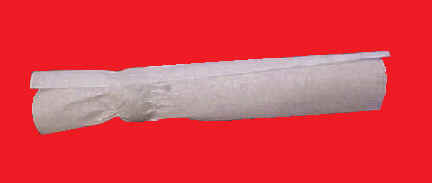
Moisten
entire front end of paper and twist shut gently.
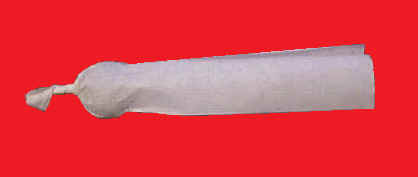
Pour
in the powder.
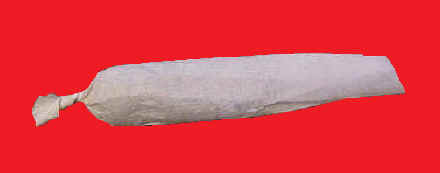
Hold
the end of the paper away from the ball and shake
gently to settle the powder. Moisten the entire
length of the paper past the powder and begin to
twist the paper closed. The powder will form the
paper into a cone shape. Continue to twist and shake
until the powder no longer moves. This must be done
gently.
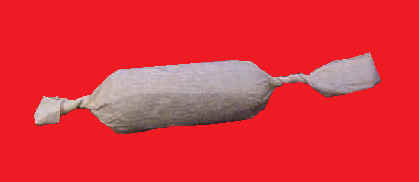
This
is what it should look like when you are done.
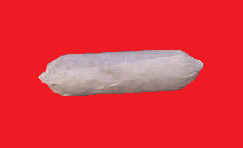
Cut the tails off,
and you have a paper cartridge.
This
works best if you let the paper dry after
each time you moisten it. If you are rolling 20 or
30 at a time, the first one is dry by the time you
do the last one. Pouring the powder in, moistening
the side, and twisting it closed are all done at the
same time, in that order.
Disclaimer--The
guns that use paper cartridges and some of the
components are illegal for some people to own in
some locations. Check your national, state,
province, local laws, rules, and regulations.